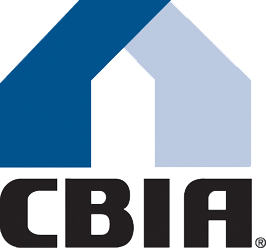by Jim Perry, President, Building Industry Association (BIA) Baldy View Chapter
This April’s National New Homes Month arrives with some welcome news for homebuyers as well as all Baldy View region residents. In late March, the United States Department of Homeland Security (DHS) designated the construction of single- and multifamily housing an Essential Infrastructure Business and the California State Public Health Officer and Director of the California Department of Public Health named all of those in the construction trades as Essential Critical Infrastructure Workers.
That means that as we work together to weather the crises created by the recent pandemic, some of the most important steps we can take in our recovery are underway now.
National New Homes Month celebrates all the benefits of new home and new home community building and - in an era of prevailing concerns about public, individual and economic health - it is important to illustrate out how new homebuilding is essential to the overall health of our environment as well as our economy - because today’s new homes are designed to protect our most precious natural resources and harmonize with our environment better than any homes in history.
When we discuss our environment, water is always the key issue. Today’s new homes consume far less water and use it more effectively than existing homes - using less than half of the potable water than that of a home built less than a decade ago and considerably less than those built in the past.
What makes this so important is because the Baldy View Region encompasses all of San Bernardino County and the eastern portion of Los Angeles County and features a Mediterranean climate characterized by warm, wet winters and calm, dry summers. Because this climate is accompanied by cycles of drought followed by periods of abundant rainfall, today’s new homebuilders utilize the latest in water conservation technology and approaches when designing landscaping for new homes and new home communities.
Today’s new home builders employ the most well-trained and sophisticated landscape architects in history and work in conjunction with various governmental environmental agencies and water districts to ensure homes offer the latest in water-efficient and effective landscape designs utilizing the newest innovations in materials, technologies and construction methodologies.
As we gradually undertake our economic recovery, it is important to remember that water is the key economic driver for our region and a cornerstone of maintaining our status as one of the nation’s most desirable destinations for homeowners and job creators. Innovations created by and for new home construction help ensure the economic security of our region as well as protecting our quality of life both indoors and outdoors.
Conserving water is a hallmark of new home building. According to a special study by Paul Emrath, Ph.D., of www.HousingEconomics.com,residential water use in the United States accounts for about eight percent of the over 350,000 million gallons of water used per day nationwide with the average housing unit using only about 260 gallons of water per day with about half of residential water use used outside the home for landscaping and outdoor recreation.
Within the home, the biggest internal users of water are toilets, followed by showers, faucets, clothes washers and leaks. The study shows that while newer homes generally offer more toilets and showers, they are likely to use less water thanks to more efficient toilets and showerheads. These water use reductions buttressed by other energy-and-resource saving innovations such as ENERGY STAR-rated appliances, tankless water heaters, and drip irrigation systems. Thanks to these, “residential use constitutes a relatively small share of the nation’s thirst” wrote Emrath.
One of these modern approaches reducing water usage and costs is through replacing traditional lawns with water-saving desertscaping known as Xeriscaping, which involves using natural precipitation to meet your landscape's watering needs and reduce water usage.
For homebuyers who prefer traditional lawn landscapes, new homes and new home communities offer drought tolerant plants, native species and designs that conserve water and provide variety to the landscape. More importantly, these new home designs conserve energy and resources beyond water. The right landscaping insulates homes from the elements – enabling or reducing sunlight entering through windows, providing windbreaks or shade.
As you can see, we spend a month every year celebrating the benefits new homebuilding brings for home buyers, homeowners, communities and the economy – and these benefits have never been more important than now.
The BIA Baldy View Chapter seeks to advance the opportunity to attain the American Dream of home ownership. For additional information on homebuying, home improvements or the benefits of homeownership, go to www.biabuild.com on the web.
*****

































